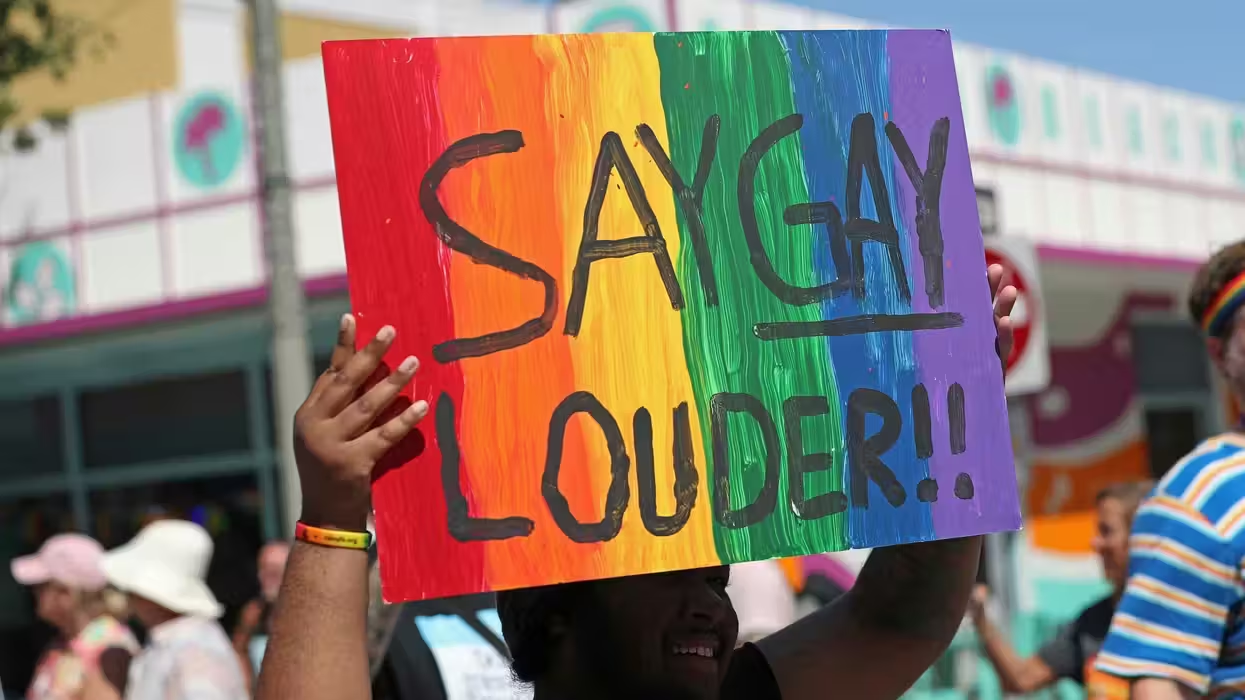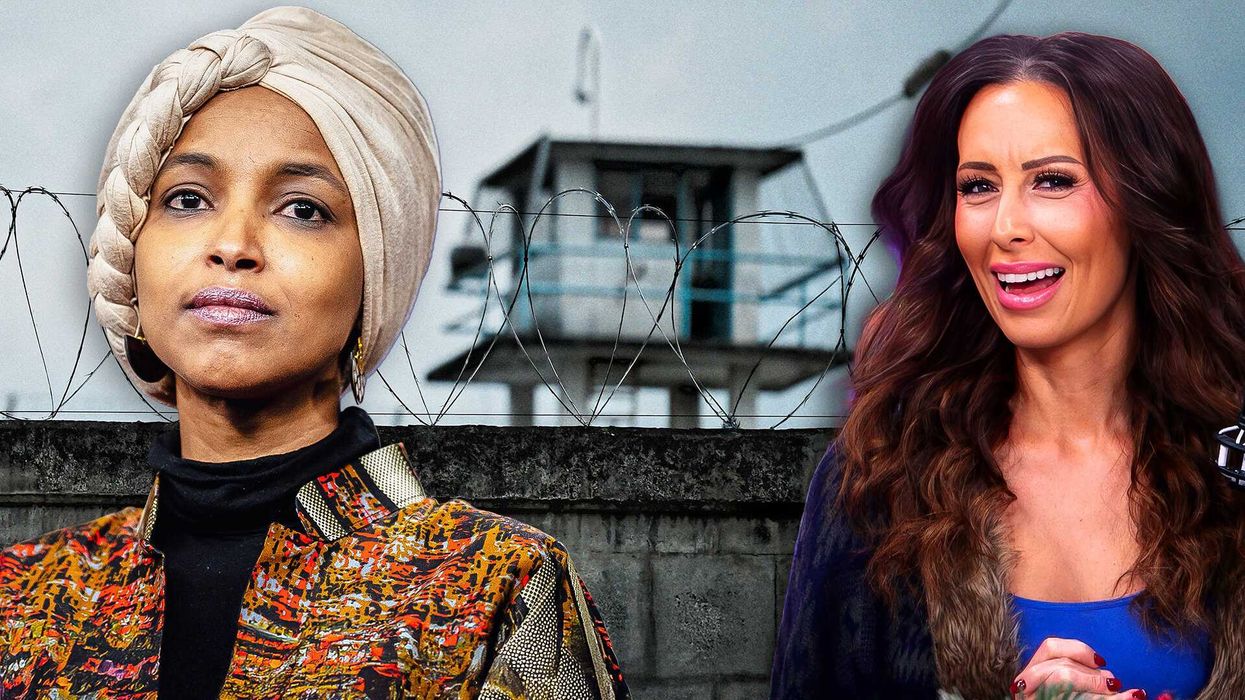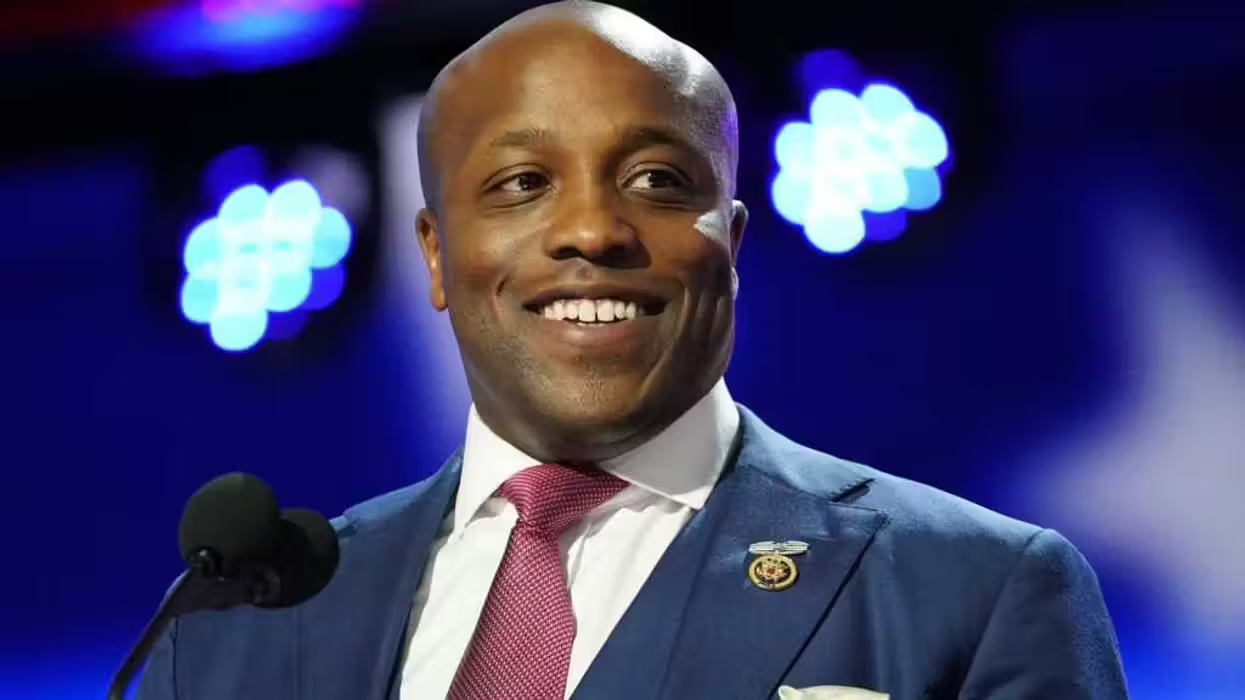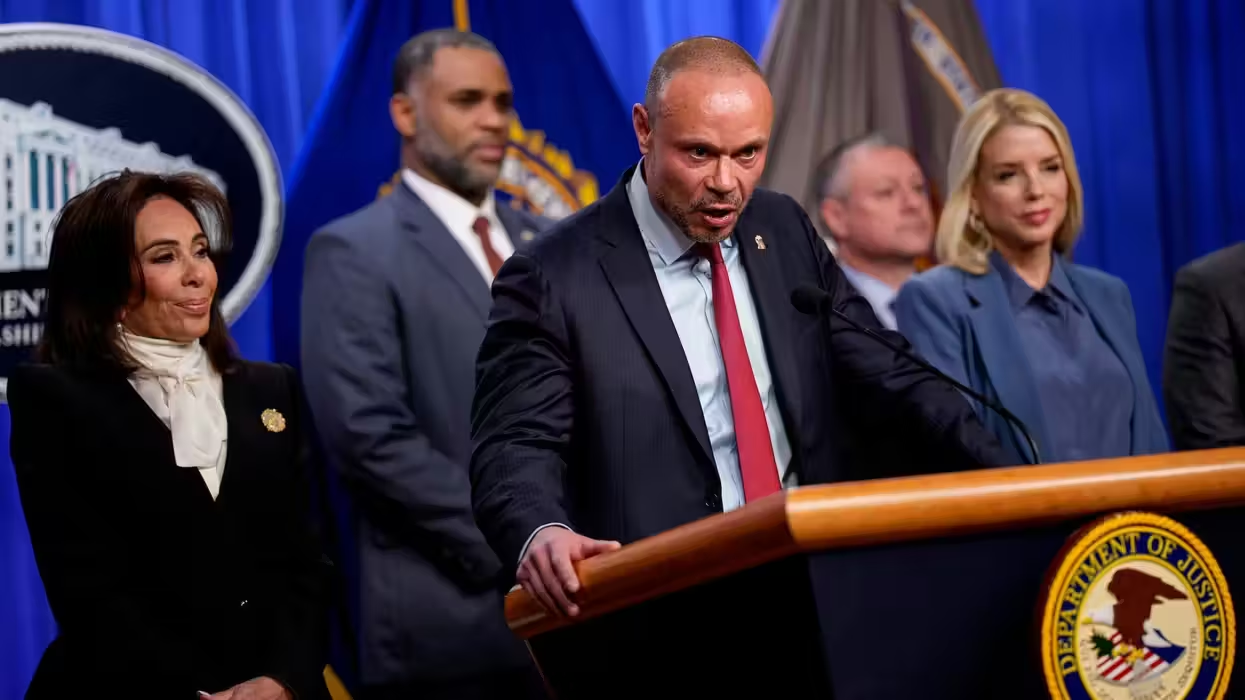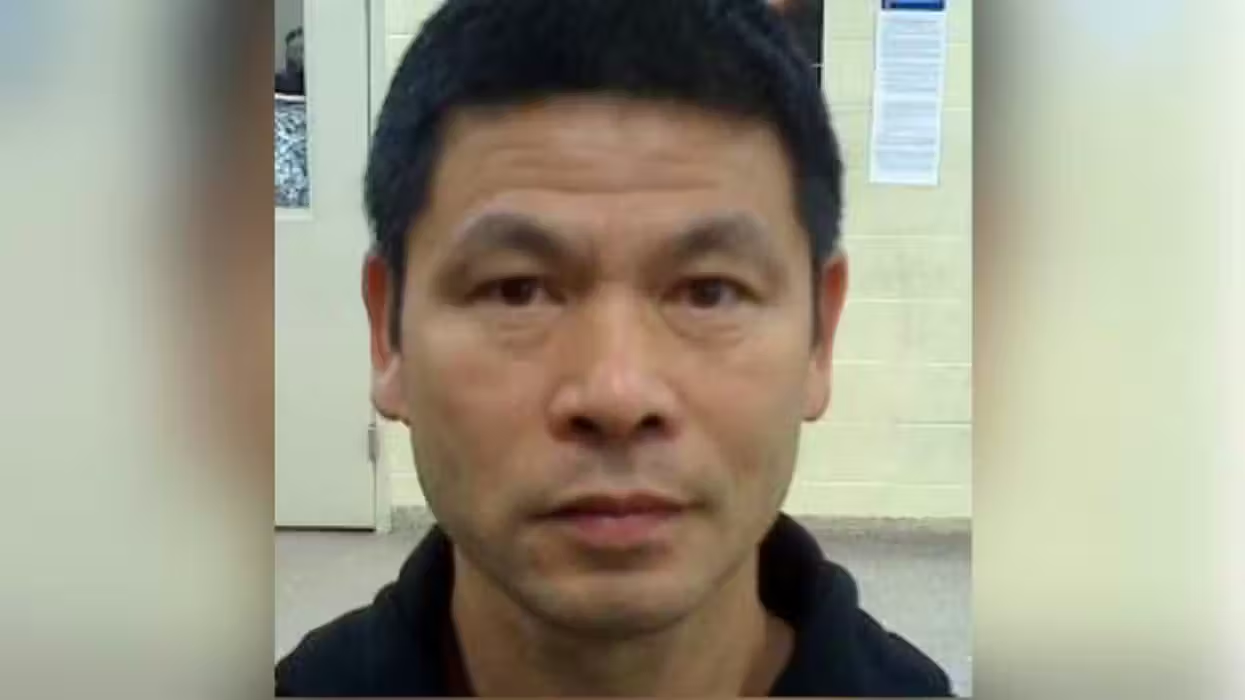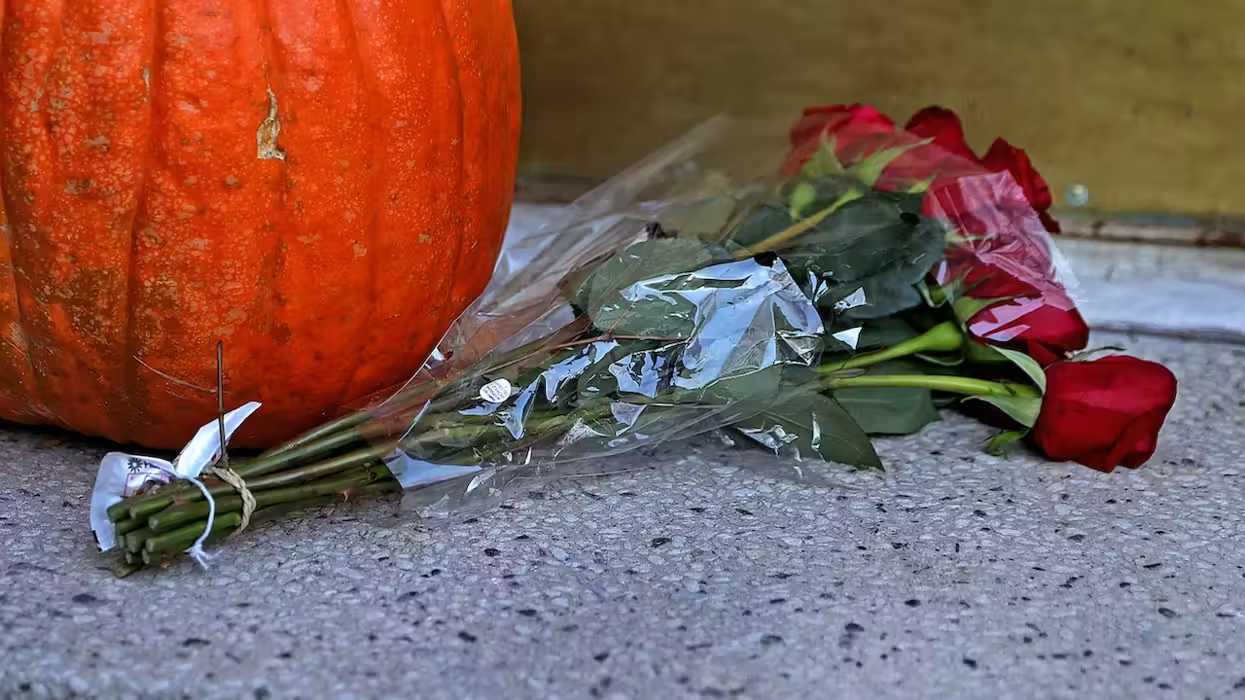Following the police-involved shooting of unarmed teenager Michael Brown, unrest has gripped a St. Louis suburb as protesters and police have clashed for two days straight. The looting and violence that occurred after the tragic shooting in Ferguson, Missouri, resulted not only in multiple arrests, but also a stronger police response.
That brings us to the seemingly glossed over aspect of the unrest in Ferguson: the startling militarization of local police forces.
Some of the photos coming out of Ferguson more closely resemble a war zone than a suburban community in Missouri.
Officers -- some riding in military vehicles -- responded to the unrest wearing full-camo riot gear, combat boots and armed with "short-barreled 5.56-mm rifles based on the military M4 carbine, with scopes that can accurately hit a target out to 500 meters," according to Business Insider's Paul Szoldra.
 Police wearing riot gear try to disperse a crowd Monday, Aug. 11, 2014, in Ferguson, Mo. The FBI opened an investigation Monday into the death of 18-year-old Michael Brown, who police said was shot multiple times Saturday after being confronted by an officer in Ferguson. (AP Photo/Jeff Roberson)
Police wearing riot gear try to disperse a crowd Monday, Aug. 11, 2014, in Ferguson, Mo. The FBI opened an investigation Monday into the death of 18-year-old Michael Brown, who police said was shot multiple times Saturday after being confronted by an officer in Ferguson. (AP Photo/Jeff Roberson)
 Police wearing riot gear point their weapons at a car as it pulls away after tear gas was used by authorities Monday, Aug. 11, 2014, in Ferguson, Mo. (AP Photo/Jeff Roberson)
Police wearing riot gear point their weapons at a car as it pulls away after tear gas was used by authorities Monday, Aug. 11, 2014, in Ferguson, Mo. (AP Photo/Jeff Roberson)
 Tactical officers fire tear gas on Monday, Aug. 11, 2014, in Ferguson, Mo. Authorities in Ferguson used tear gas and rubber bullets to try to disperse a large crowd Monday night that had gathered at the site of a burned-out convenience store damaged a night earlier, when many businesses in the area were looted. (AP Photo/St. Louis Post-Dispatch, Robert Cohen)
Tactical officers fire tear gas on Monday, Aug. 11, 2014, in Ferguson, Mo. Authorities in Ferguson used tear gas and rubber bullets to try to disperse a large crowd Monday night that had gathered at the site of a burned-out convenience store damaged a night earlier, when many businesses in the area were looted. (AP Photo/St. Louis Post-Dispatch, Robert Cohen)
 Police wearing riot gear walk toward a man with his hands raised Monday, Aug. 11, 2014, in Ferguson, Mo. Authorities have made several arrests in Ferguson, where crowds have looted and burned stores, vandalized vehicles and taunted police after a vigil for an unarmed black man who was killed by police. (AP Photo/Jeff Roberson)
Police wearing riot gear walk toward a man with his hands raised Monday, Aug. 11, 2014, in Ferguson, Mo. Authorities have made several arrests in Ferguson, where crowds have looted and burned stores, vandalized vehicles and taunted police after a vigil for an unarmed black man who was killed by police. (AP Photo/Jeff Roberson)
 Tactical officers fire tear gas on Monday, Aug. 11, 2014, in Ferguson, Mo. Authorities in Ferguson used tear gas and rubber bullets to try to disperse a large crowd Monday night that had gathered at the site of a burned-out convenience store damaged a night earlier, when many businesses in the area were looted. (AP Photo/St. Louis Post-Dispatch, Robert Cohen)
Tactical officers fire tear gas on Monday, Aug. 11, 2014, in Ferguson, Mo. Authorities in Ferguson used tear gas and rubber bullets to try to disperse a large crowd Monday night that had gathered at the site of a burned-out convenience store damaged a night earlier, when many businesses in the area were looted. (AP Photo/St. Louis Post-Dispatch, Robert Cohen)
 FERGUSON, MO - AUGUST 11: Tear gas hangs in the air as police force protestors from the business district into nearby neighborhoods on August 11, 2014 in Ferguson, Missouri. Police responded with tear gas and rubber bullets as residents and their supporters protested the shooting by police of an unarmed black teenager named Michael Brown who was killed Saturday in this suburban St. Louis community. Yesterday 32 arrests were made after protests turned into rioting and looting in Ferguson. (Scott Olson/Getty Images)
FERGUSON, MO - AUGUST 11: Tear gas hangs in the air as police force protestors from the business district into nearby neighborhoods on August 11, 2014 in Ferguson, Missouri. Police responded with tear gas and rubber bullets as residents and their supporters protested the shooting by police of an unarmed black teenager named Michael Brown who was killed Saturday in this suburban St. Louis community. Yesterday 32 arrests were made after protests turned into rioting and looting in Ferguson. (Scott Olson/Getty Images)
Szoldra, who served on a U.S. Marine on patrol in Afghanistan, brings a unique perspective to the police situation in Ferguson:
While serving as a U.S. Marine on patrol in Afghanistan, we wore desert camouflage to blend in with our surroundings, carried rifles to shoot back when under enemy attack, and drove around in armored vehicles to ward off roadside bombs.
We looked intimidating, but all of our vehicles and equipment had a clear purpose for combat against enemy forces. So why is this same gear being used on our city streets?
[...]
Their uniform would be mistaken for a soldier's if it weren't for their "Police" patches. They wear green tops, and pants fashioned after the U.S. Marine Corps MARPAT camouflage pattern. And they stand in front of a massive uparmored truck called a Bearcat, similar in look to a mine-resistant ambush protected vehicle, or as the troops who rode in them call it, the MRAP.
"Why do these cops need MARPAT camo pants again," I asked on Twitter this morning. One of the most interesting responses came from a follower who says he served in the Army's 82nd Airborne Division: "We rolled lighter than that in an actual warzone."
Have local police forces become too militarized? Take our poll below:
--

 Police wearing riot gear try to disperse a crowd Monday, Aug. 11, 2014, in Ferguson, Mo. The FBI opened an investigation Monday into the death of 18-year-old Michael Brown, who police said was shot multiple times Saturday after being confronted by an officer in Ferguson. (AP Photo/Jeff Roberson)
Police wearing riot gear try to disperse a crowd Monday, Aug. 11, 2014, in Ferguson, Mo. The FBI opened an investigation Monday into the death of 18-year-old Michael Brown, who police said was shot multiple times Saturday after being confronted by an officer in Ferguson. (AP Photo/Jeff Roberson)

